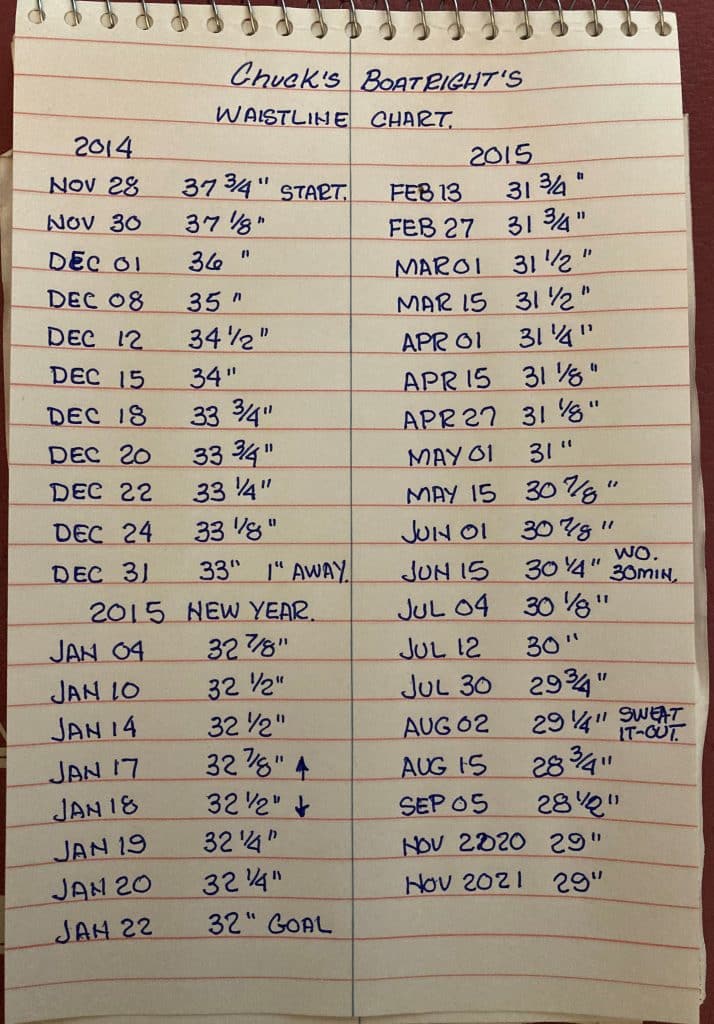Insights from the American Medical Association (AMA) on the pursuit of better health metrics, has shifted focus from traditional assessments like body mass index (BMI) and simple scale weighing to more straightforward of measuring your waistline, or circumference of your waist like you would for a pair of Levis or American Eagle Blue Jeans that Sydney Sweeney has made famous. There’s not a more fashion statement you can make than with great abdominal fitness and age-defying skin, even over the age of 50.
According to AMA policy adopted in June 2023, BMI—calculated as weight in kilograms divided by height in meters squared—should not be used in isolation due to its significant limitations. Instead using a waist measurement provides a superior evaluation of health risks, particularly those related to obesity and chronic diseases. This approach emphasizes abdominal fat distribution, which is a stronger indicator of conditions like heart disease, diabetes, and metabolic syndrome than overall weight or BMI alone. In addition, the Height to Waistline Ration is easier and supplies clear results. This is why the person’s AB’s garner a lot of attention.
Scale weighing, while straightforward, offers even less insight. It merely captures total body mass without context for height, muscle composition, or fat location. A muscular athlete might weigh heavily yet be healthy, while someone lighter could harbor dangerous visceral fat around organs. BMI attempts to improve on this by factoring in height, but as the AMA notes, it fails to differentiate between fat and lean mass, leading to misclassifications.
For instance, athletes with high muscle mass are often labeled “overweight” or “obese,” while individuals with low muscle but excess fat might appear “normal.” The AMA’s Council on Science and Public Health report highlights BMI’s historical biases, rooted in data from non-Hispanic white populations, ignoring ethnic, gender, and age variations. Asians, for example, face higher risks at lower BMIs, and older adults accumulate more fat without BMI reflecting it accurately.
Waist circumference addresses these gaps by targeting central obesity, where fat accumulates around the abdomen. Visceral fat releases inflammatory substances and hormones that disrupt metabolism, elevating risks for cardiovascular disease, insulin resistance, and mortality. Studies cited in AMA discussions show waist size predicts heart attacks better than BMI, especially in women.
The AMA recommends measuring waist at the navel level, post-exhalation, for adults with BMI under 35 kg/m². Thresholds include greater than 35 inches for women and 40 inches for men as high-risk markers for heart disease and type 2 diabetes.
This method is simple, cost-free, and more predictive of health outcomes than BMI or weight alone, as it correlates directly with harmful fat distribution.
Beyond basic waist size, the AMA endorses related metrics like waist-to-hip ratio (WHR) and waist-to-height ratio. WHR, calculated by dividing waist by hip circumference, flags abdominal obesity if above 0.90 for men or 0.85 for women, per World Health Organization standards referenced in AMA reports.
A more adopted method is a lot straight forward by dividing your height in inches by 2 that indicates a top limit of a healthy waistline. A personalized benchmark is keeping waist circumference less than half one’s height in inches.
The under 0.5 multiplied one’s height aligns with AMA-supported alternatives like relative fat mass (RFM), a formula using height-to-waist ratios to estimate body fat more accurately across demographics.
For a 70-inch-tall person, this means aiming for under 35 inches. Research supports this as a universal cutoff, outperforming BMI in predicting cardiometabolic risks and applicable to diverse groups without ethnic adjustments.
For example, my Healthy Waistline should be = 66- inches / 2 = 33.0- inches. Because I model, I use a denominator of 2.20 or:
66- inches / 2.20 = 30- inch waistline. My waist presently is 29.0- inches.
The AMA’s stance stems from evidence that waist-based metrics capture nuances BMI and weighing miss, such as body composition and fat location. For children, BMI-for-age remains standard due to limited waist data, but for adults, integrating waist measurements enhances risk stratification.
Physicians are urged to educate patients on these tools, avoiding BMI’s sole use for insurance or treatment decisions, which can perpetuate inequities. I personally have been using the height-to-waist ratio since 2014. I even kept track of my metrics on my Waistline Chart, below from 28Nov2014 to 05Sep2015 and now check weekly.

Remember: If you can’t measure it, you can’t achieve it!
Adopting waist measurement empowers individuals: it’s actionable, encouraging lifestyle changes like diet and exercise that target belly fat. While BMI and scales have roles in tracking trends, they pale against waist’s direct link to vitality. As AMA policy evolves, this shift promises more effective health assessments, urging everyone to grab a tape measure for a truer picture of well-being. Mentioning picture, a photoshoot is the ultimate assessment of your weight and conditioning status. A cloth tape is inexpensive, accurate, and easy to use.
My CATABOLIC Diet & Fitness Book will be on KINDLE 14Sep2025

My results, shown above, that I still have 11- years after I started the CATABOLIC Diet & Fitness Program that turned my body into a calories-burning-juggernaut to drop weight, inches, and even years off my age now at age 68. I’m shown here doing an AB Challenge after a photoshoot we did in April of 2025 in our hangar preparing for a classic car & airshow,





